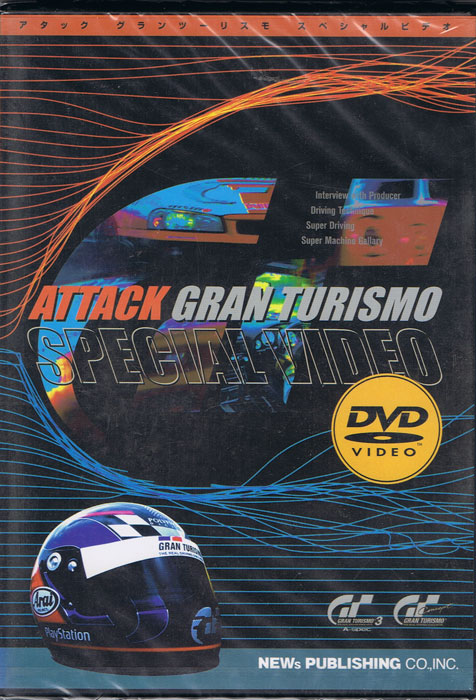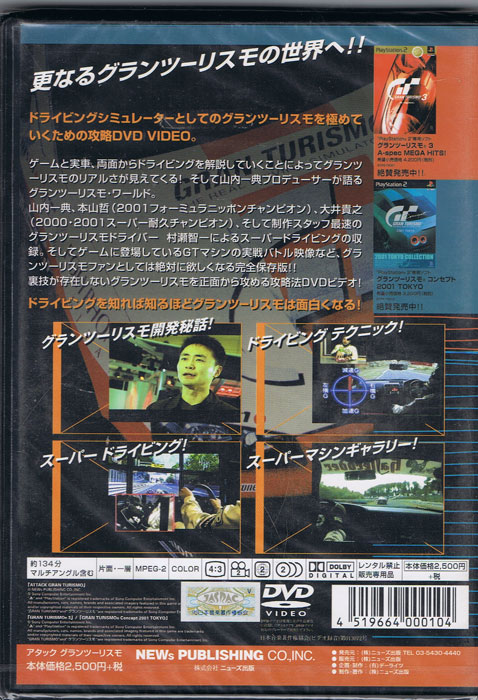Well, I know few details but not much.
I am happy to have a Japanese-only DVD release of 2002 documentary about developing GT3, called
Attack Gran Turismo Special Video. It is very precious footage, especially because it shows how Polyphony approached to breaktgrough-process of creating physics-engine built around wheels (with Logitech back at the time), something that no other developer was doing at a time (and something that many developers are not doing even today).
Here is the DVD intro-sequence with Kaz driving his 996 911 GT3 at dawn at Tokyo >>
http://www.youtube.com/watch?v=SbjihLI1FC0
There was also a
GT4 Making of bonus-documentary DVD with initial copies of PAL release of GT4

rologue, but it mainly concentrates on testing the vehicles.
As far as GT5 graphics/lightning/shaders engine is concerned, all we know is how PD is employing their own custom-built engine made 100% in-house.
Only thing we know for certain is how Polyphony is using what was then (during 2005-2008 GT5-engine initial development, used for both GT:HD and GT5

rologue) one of the two The Illuminate Labs plug-in products - either Turtle or Beast or both, we don't know that info - basically a middleware lightning plug-in for global illumination effects for PD's own proprietary lightning engine and help with some Maya rendering.
In the meantime (2010) The Illuminate Labs have been bought by Autodesk Company and now that particular solutions have been integrated into what is today an Autodesk Beast global illumination (GI) middleware.
Last time any mention of GT series using that solution was during Prologue development phase where Prologue screenshots were even used for print-advertising of The Illuminate Labs in specialized print.
However, since Autodesk bought The Illuminate Labs, Gran Turismo is nowhere to be seen on their official web nor it lists their solutions on the credits.
Worth noticing is how Illuminate Labs' solutions were backthen used also by EA, Blizzard, Epic, SQ and many more while today Autodesk Beast is one of the most common middleware solution in this gen.
Some examples from Autodesk's developer section using Autodesk solutions (
size alert):
http://area.autodesk.com/userdata/image/showcase/h/7g9cb-73k85-k68e3-gsy33.jpg
http://area.autodesk.com/userdata/image/showcase/a/qpk27-5b2ec-ukar6-7z2d2.jpg
http://area.autodesk.com/userdata/image/showcase/p/r5g88-f2576-7aqvr-48tc6.jpg
Guy named Luis Nieves did this beautiful video of GT40 using Autodesk Maya plugin:
http://www.youtube.com/watch?v=Ktayh4vpC_U
>> please, watch this video in 720p in full-screen
However, what is in fact MOST FASCINATING about PD's work is actual EFFICIENCY of their engine. They can accomplish that GT5 looks like it looks (despite tearing and slowdowns, really) on hardware as PS3 - and that really is an damn accomplishment. I often copy/paste this description I've made 2 years ago about what GT5 engine is actually doing in real-time during gameplay (and it covers only "visible" parts of actual processes):
60fps/1240x1080p in real-time with everything that is going on during the race - 16 cars on track with scalable physics engine (up to 360Hz) and full-presence (no CPU "shadowing") of 15+1 vehicle AI, real-time HDR, real-time effects of flames and brakes, real-time particle effects (including progressive dirt accumulation on vehicles), real-time smoke, daytime/weather engine with full-HDR properties, real-time ambiance lighting with lens-flaring for both vehicles and surroundings, animated rain with physics properties, animated in-car drivers for all 16 vehicles, movable objects in cockpits, progressively animated vehicles (aerodynamic parts, suspensions and real-time crumble damage, wipers and aerodynamically influenced parts such as antennas, visible progressive dirt accumulation/removal on tyres), on-tracks physics (side-track objects with own physical properties, real-time wind simulation, real-time skid marks..), fully animated multi-team pit-crew AI with own sequences, real-time vehicle properties (mechanical damage, tyre and fuel), real-time track properties that influence vehicles and weather-engine (temperature, air humidity, track temperature, surface humidity..), real-time weather properties with own sub-engine (rain changes into light snow for instance on SSR7 track or clear weather changes to light snow and to blizzard on Chamonix..), ambiance effects (fireworks, etc.), real-time background saving of all race-data, parallel sub-engine for FFB HID devices, 7.1 PCM audio with real-time point-to-object spatiality, etc.)
They are magicians, anyone can say whatever he wants to, but truth is truth.


















